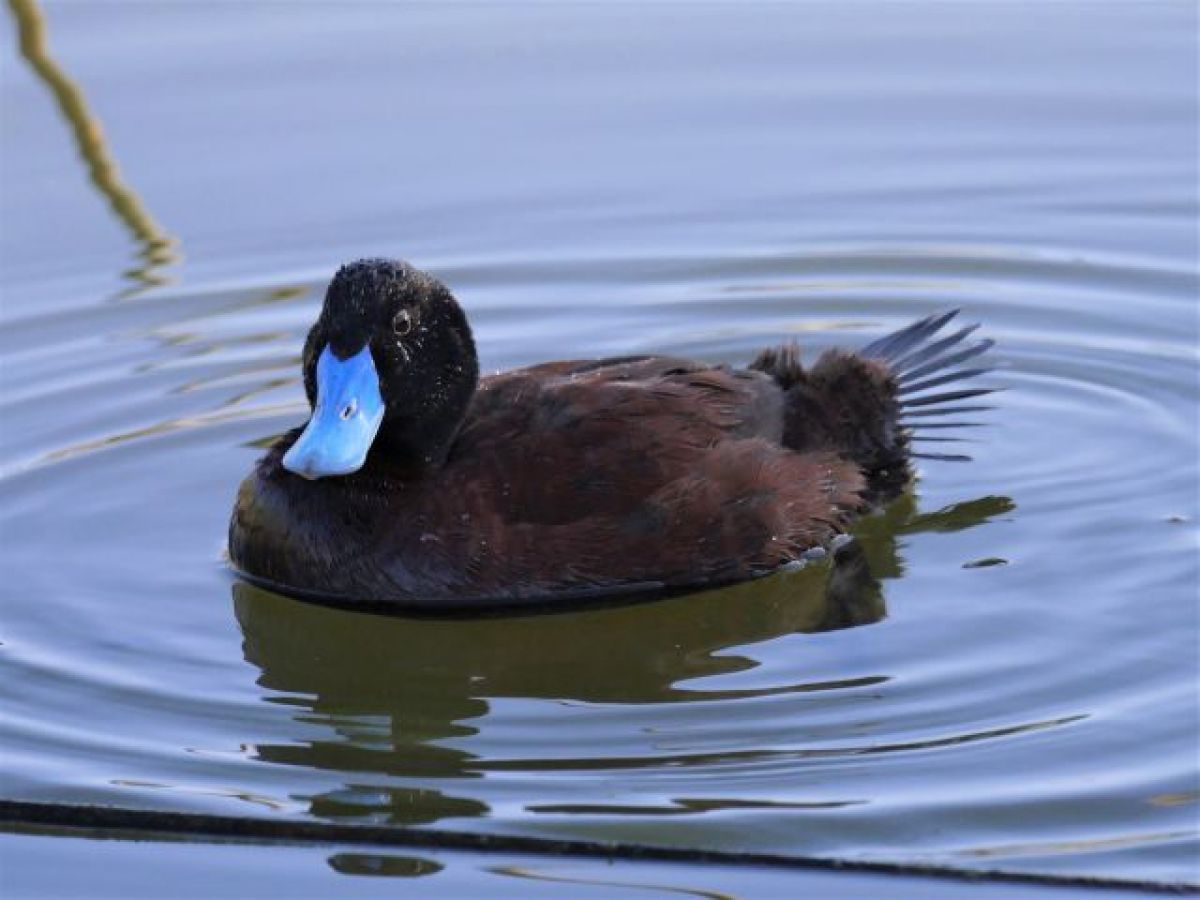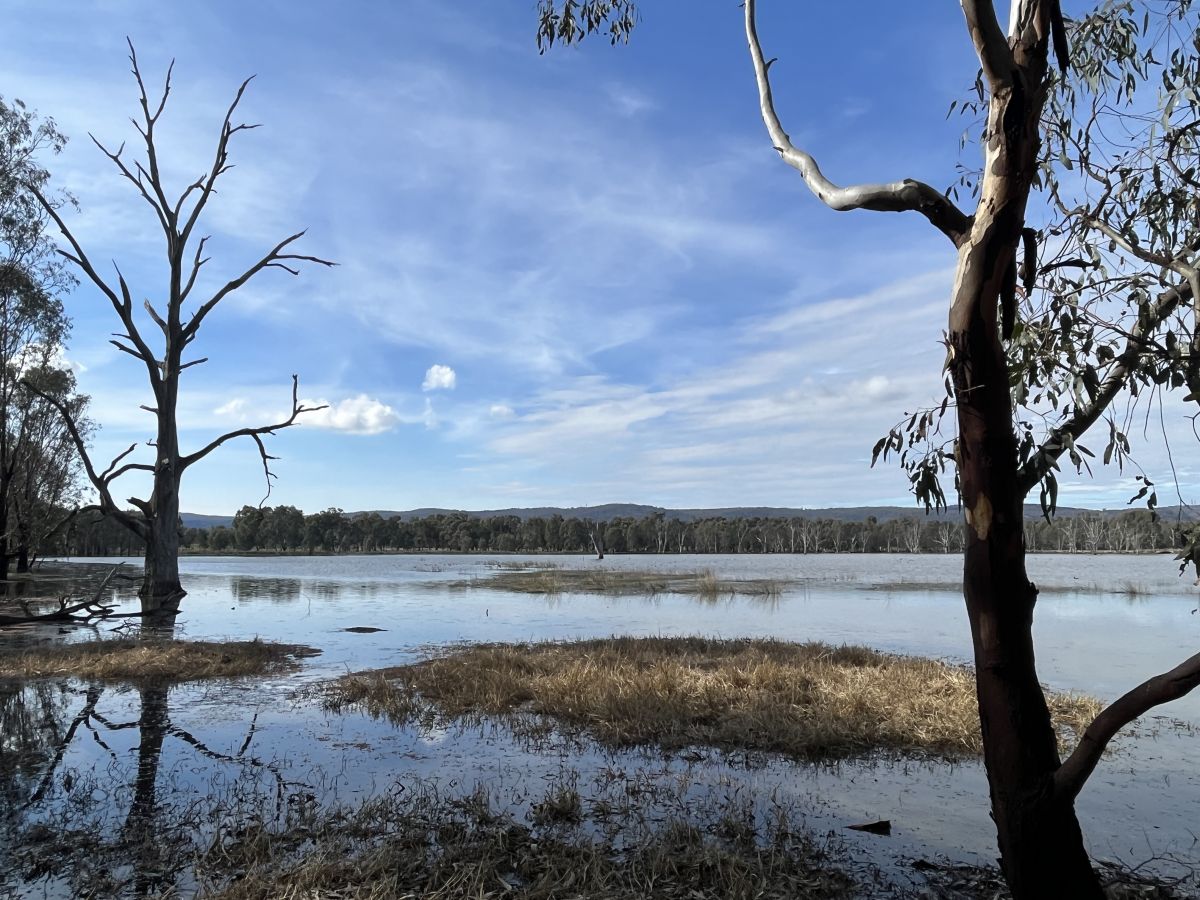An identification and habitat management guide
Wetlands of Northeast Victoria provide habitat for a diverse array of migratory and non-migratory wetland birds.
These include threatened species and some that migrate from the northern hemisphere.
Many wetland-dependent bird species are declining at an alarming rate. 14 out of 52 species in the brochure are threatened and are protected under the National Environment Protection &\; Biodiversity Conservation Act and Victoria's Flora and Fauna Guarantee Act.
Both permanent and temporary wetlands are critical for biodiversity and ecological productivity. These wetland systems are also breeding areas for:
- native fish
- insects
- crustaceans
- reptiles and amphibians.
Unfortunately, vast areas of wetlands have been drained or cultivated causing wetland birds to decline. On-ground work has already begun to protect and restore wetland habitat in the region through:
- environmental watering
- fencing
- predator control
- other appropriate management.
Download the brochure
You can keep reading this page to learn more or download our brochure on the species and habitats of wetland birds:







Shallow wetlands
Shallow wetlands typically experience seasonal drying and provide wildlife habitat that differs from permanent wetlands.
Shallow wetlands provide important habitat for birds such as:
- The Australian Painted Snipe
- Australian Spotted Crake.
These hard-to-spot birds use shrubs for shelter and roosting, and forage in the surrounding shallow muddy areas. Areas of slightly deeper water are the favoured feeding ground of Freckled and Pink-eared Ducks and Yellow-billed Spoonbill.
Shallow marshes
Shallow marshes occur as low-lying depressions in flood-prone areas and are not often recognisable as ‘wetlands’ except following rainfall or flood.
Once marshes flood, wetland plants establish quickly and birds colonise.
As water levels recede, shallow marshes are habitats for species that forage on insects on the water’s surface, emergent foliage and areas of damp ground.
Brolga breed almost exclusively in large open shallow marshes that flood for 2-6 months at a time. Species such as Black-winged Stilt and Whiskered Tern commence breeding in these wetlands 3 months after inundation and require water for a further 6 months for success.
Treed wetlands
Large trees growing in wetlands and along watercourses are a significant ecological asset.
Red Gums offer an enormous range of habitat resources:
- shelter
- feeding areas
- resting perches
- sticks for nest building
- nesting sites in branches and hollow limbs.
Tree-lined watercourses provide corridors for birds to forage and move through the landscape. Wetland birds associated with Red Gum, Grey and Black Box wetlands, include:
- Nankeen Night-Heron
- Pacific Black Duck
- Darter and Cormorant.
Living and dead trees provide essential habitat, and maintaining flows to waterways is vital.
Tall marshes
Wetland margins that support emergent clumps of cumbungi, reeds and tall spike rush provide a habitat that is useful to a suite of wetland birds. Birds that prefer to live in deep shelter (Bittern and Rail), those that use ‘ribbons’ of aquatic vegetation for nesting material or platforms to forage (Swan, Grebe and Crake), and those that forage in deeper water close to fringing reed beds (e.g. Swamphen, Moorhen and Coot).
Spike rush responds quickly to shallow flooding (5-50cm). The underground tubers are a favoured food source of Brolga. Cumbungi and reeds prefer deeper, more permanent water, especially over summer.
Deepwater wetlands
Deepwater wetlands, dams and lakes are typically categorised by permanent, open bodies of still water that are not impeded by tall trees, shrubs or other terrestrial vegetation (although may be bounded by cumbungi-dominant areas).
These water bodies are deep and cold, sustaining a variety of aquatic and benthic vegetation and diverse invertebrate populations. These areas provide habitat for species that are habitually aquatic, diving waterbirds that feed nearly exclusively underwater:
- Musk Duck
- Hardhead
- Blue-billed Duck
These wetlands are prone to habitat degradation from invasive European Carp (Cyprinus carpio). Habitat degradation destroys benthic vegetation, reduces invertebrate populations, deteriorates water quality and prevents the regeneration of wetland vegetation.
Creating a wetland from your farm dam
Most existing farm dams have insufficient habitat to support wetland birds. However, these species do occur:
- Australian Wood Duck
- Yellow-billed Spoonbill
- Australasian Grebe.
Simple changes to farm dams can improve their habitat value. Such as:
- Creating shallow margins (<50cm) to part of a dam will allow sunlight to penetrate and promote aquatic plant growth for a wider range of wetland species.
- Fencing these areas from grazing will encourage vegetation to flourish, providing excellent habitat for birds such as Great Egret, White-necked and White-faced Heron, Australian Spotted Crake, Black-winged Stilt and Red-kneed Dotterel.
- Consider restoring your farm dam into a wetland oasis when re-digging or desilting.
Wetland weeds
Wetland weeds form dense infestations, compete with native shrubs and change the ecological character, composition and habitat suitability of wetlands. There are two types:
- Cabomba
- Cabomba caroliniana var.caroliniana
- Salvinia
- Salvinia molesta
- Alligator Weed
- Alternanthera philoxeroides
- Arrowhead
- Sagittaria platyphylla
- Water hyacinth
- Eichhornia crassipes
- Parrots Feather
- Myriophyllum aquaticum.
- Water Couch
- Paspalum distichum
- Terrestrial weeds (such as Willows, Salix spp.)
Ensure wetland areas receive and hold water
Flooding is the driving factor responsible for the existence and productivity of wetland birds. Wetlands in this region have variable flooding cycles depending on whether they are on a major waterway floodplain (e.g. Murray River) or from rainfall runoff.
It's important to develop a strategy to ensure that every wetland receives adequate water (e.g. banks do not interfere with the flow).
Get involved
How can you get involved in wetland protection:
- pest animal eradication around wetlands for example spring fox drive
- participate in bird surveys
- submit records of birds you have seen to the Birdata (BirdLife Australia)
- join or support a community group or conservation organisation such as
- Landcare
- BirdLife Australia
- RiverConnect (Shepparton area)
- Swamps, Rivers and Ranges.
Page last updated: 23/01/25